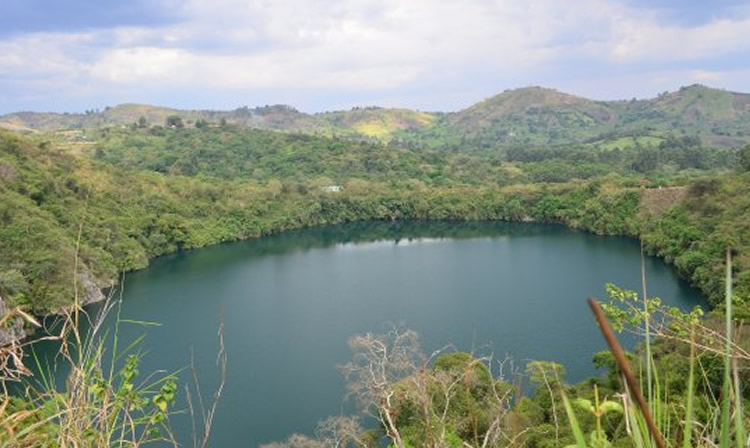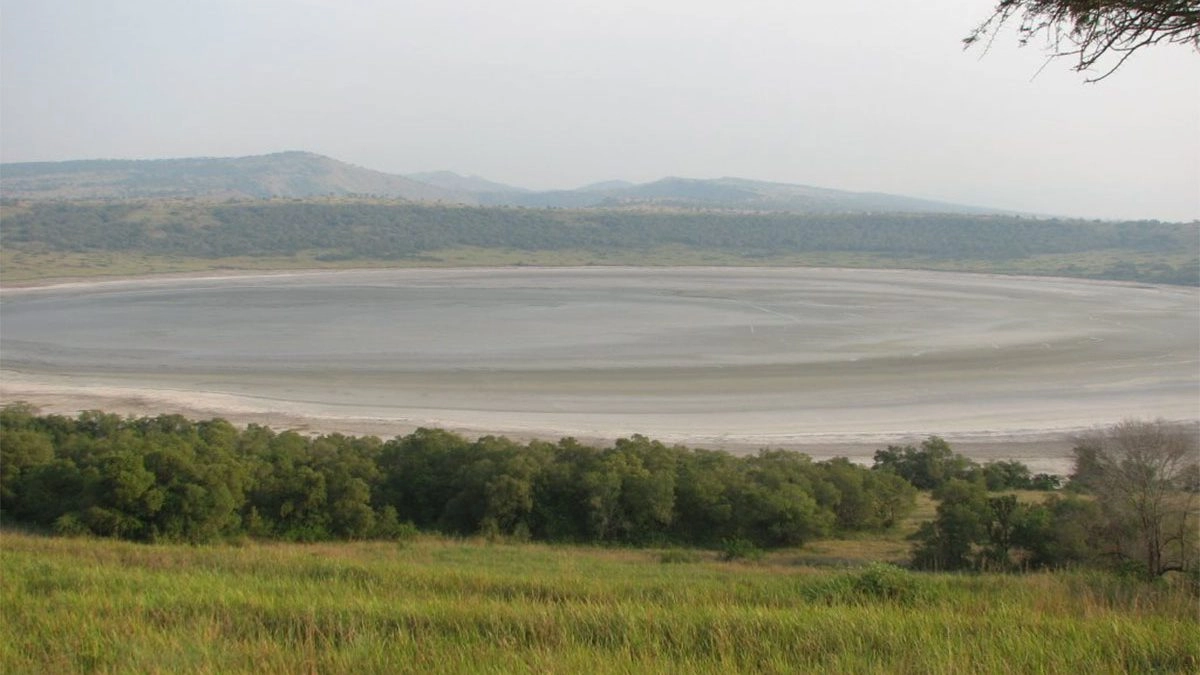Crater Lakes of Queen Elizabeth National Park: Queen Elizabeth National Park is a savanna grassland park in the country’s west. The park covers approximately 1,970 square kilometers and is considered Uganda’s second largest national park. Game viewing in the Kasenyi, Mweya, and Ishasha Sectors, nature walks, chimp trekking in the exhilarating Kyambura Gorge, a boat cruise on the Kazinga Channel, birding, and other activities are available in Queen Elizabeth National Park. Water bodies, savanna grasslands, primates, mammals, and bird species are among the wildlife that can be seen during these activities.
Queen Elizabeth National Park contains a number of crater lakes formed as a result of the vulcanization of molten rock (lava), which involves a violent eruption that reaches the top of a volcano cone, which is then blown off, forming a large basin surrounded by lava, a harsh realm, and rock debris. The crater’s end results are quite interesting, and a trip to Queen Elizabeth is rewarding because you get to see so much beauty in one place. These are some examples:
Lake Katwe Explosion Craters

Lake Katwe Explosion Crater is Queen Elizabeth National Park’s largest and oldest Crater Lake. Its the most significant of the Crater Lakes of Queen Elizabeth National Park. It is located on the outskirts of the park, approximately 10m2 from the Kasese District. Lake Katwe Explosion Craters, also known as Katwe-Kikorongo Explosion Craters, are grouped into different volcanoes in Toro, which is located in the country’s far west. The volcanic field at Lake Katwe Explosion Crater is over 200km2 in size, with a length of 3km, a diameter of 3km, and a depth of over 110m.
Lake Katwe was once part of the Toro Kingdom, which was later taken over by Omukama Kabalega, who led the first military clash between the British and the Bunyoro. Captain Fredrick Lugard led the British delegation to Uganda in 1890. He later wrote a report about Lake Katwe, which he described as “a beautiful white clean lake piled with salt in heaps covered in glass.”
Bunyaruguru Crater
 Bunyaruguru Crater is located at the edge of the Kichwanba Escapement in Queen Elizabeth National Park’s western rift valley. This crater is also known as the Kichwamba crater field, and it contains both fresh and salt water. Bunyaruguru Crater is free of Bilharzia and is suitable for swimming due to its shallow depth. Its main activities are fishing and tourism. Expect to see a variety of wildlife, including primates, birds, and many other species, while exploring Bunyaruguru Crater. Local guides usually organize walks around Bunyaruguru Crater to Mahoma Falls. Visit Bunyaruguru Crater with Lakeside Tours and Travel and you will get the most out of it all thanks to our knowledgeable tour guide.
Bunyaruguru Crater is located at the edge of the Kichwanba Escapement in Queen Elizabeth National Park’s western rift valley. This crater is also known as the Kichwamba crater field, and it contains both fresh and salt water. Bunyaruguru Crater is free of Bilharzia and is suitable for swimming due to its shallow depth. Its main activities are fishing and tourism. Expect to see a variety of wildlife, including primates, birds, and many other species, while exploring Bunyaruguru Crater. Local guides usually organize walks around Bunyaruguru Crater to Mahoma Falls. Visit Bunyaruguru Crater with Lakeside Tours and Travel and you will get the most out of it all thanks to our knowledgeable tour guide.
Nyamunuka Crater Lake

Because Nyamunuka Crater Lake is seasonal, it is only filled with water during the wet seasons. When visiting Nyamunuka Crater Lake during the dry season, expect to see nothing because the lake may have dried up. This lake is surrounded by beautiful wildlife scenes, including birds, wild animals, and many others.
The water in Nyamunuka Crater Lake contains Sulphur, which the locals use to treat ticks. The water also aids in the healing of wounds sustained by wild animals as a result of fighting among themselves or from hunters.
Nyamusingire Lake
This lake is another of the Crater Lakes of Queen Elizabeth National Park. This is found near Lake Nyamusigire in Queen Elizabeth National Park, Uganda’s most famous park. Lake Nyamusingire is a crater lake that has been elevated to over 1,015 meters above sea level; it is also known as Lake Naimsigeri or Lake Nyamisgeri. It takes about 6 to 7 hours to drive from Kampala to Lake Nyamusingire in Queen Elizabeth.
Lake Nyamusingire offers a variety of activities such as birding, nature walks, canoe rides, and a boat cruise. The activities around the lake are rewarding because you get to see a lot of wildlife, such as the Maramagambo Forest, the bat cave, which is home to a lot of bats, bird species around the lake, and wild animals.







